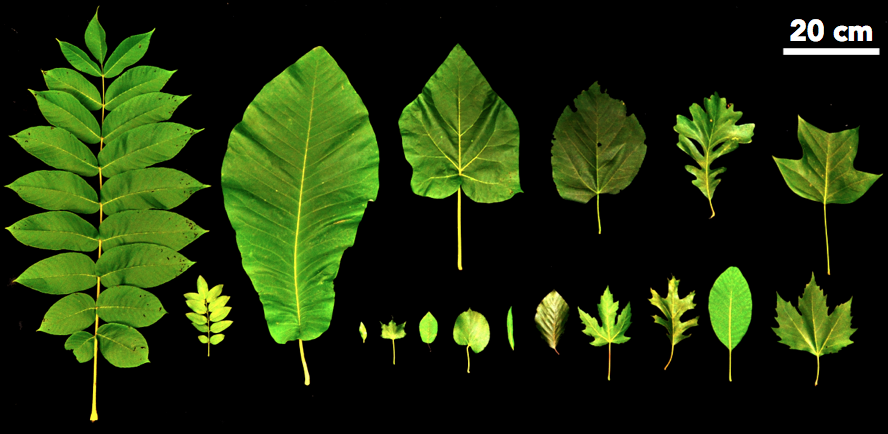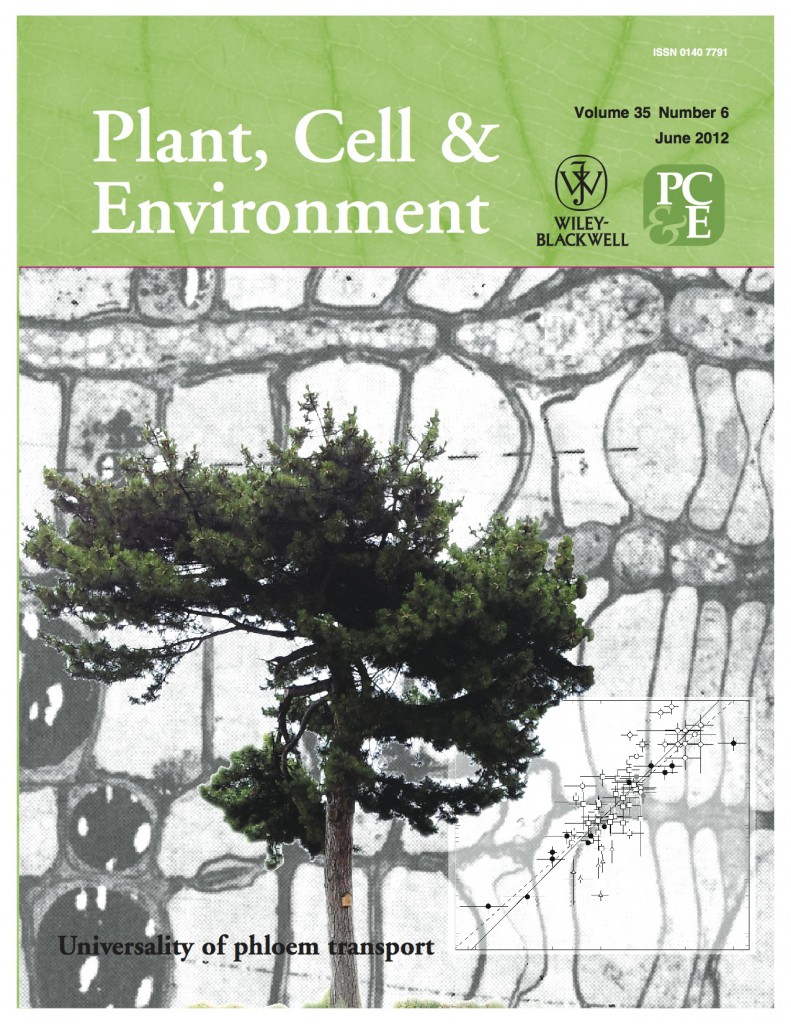
Physical Limits to Leaf Size in Tall Trees
Kaare H. Jensen and Maciej A. Zwieniecki
Physical Review Letters 110, 018104 (2013) (pdf,sm,journal)
Leaf size in angiosperm trees vary by more than three orders of magnitude, from a few mm to over 1 m. This large morphological freedom is, however, only expressed in small trees and the observed leaf size range declines with tree height, forming well-defined upper and lower boundaries. The vascular system of tall trees that distributes the products of photosynthesis connects distal parts of the plant and forms one of the largest known continuous microfluidic distribution networks. In biological systems, intrinsic properties of vascular systems are known to constrain the morphological freedom of the organism. We show that the limits to leaf size can be understood by physical constraints imposed by intrinsic properties of the carbohydrate transport network. The lower boundary is set by a minimum energy flux, the upper boundary by a diminishing gain in transport efficiency.
Press:
Science NOW
New Scientist
Physical Review Focus
arstechnica
reddit
Physics Today
Ingeniøren.dk
videnskab.dk (Nominated for best Danish research paper of 2013 by videnskab.dk)
ScienceNordic.com
Scitechdaily.com
Futura-Sciences.com
The California Aggie
Polskie Radio

Universality of phloem transport in seed plants
K. H. Jensen, J. Liesche, T. Bohr and A. Schulz
Plant Cell & Environment 35(6), 1065–1076 (2012). (pdf,journal cover page,journal)
Since Münch in the 1920s proposed that sugar transport in the phloem vascular system is driven by osmotic pressure gradients, his hypothesis has been strongly supported by evidence from herbaceous angiosperms. Experimental constraints made it difficult to test this proposal in large trees, where the distance between source and sink might prove incompatible with the hypothesis. Recently, the theoretical optimization of the Münch mechanism was shown to lead to surprisingly simple predictions for the dimensions of the phloem sieve elements in relation to that of fast growing angiosperms. These results can be obtained in a very transparent way using a simple coupled resistor model. To test the universality of the Münch mechanism, we compiled anatomical data for 32 angiosperm and 38 gymnosperm trees with heights spanning 0.1–50 m. The species studied showed a remarkable correlation with the scaling predictions. The compiled data allowed calculating stem sieve element conductivity and predicting phloem sap flow velocity. The central finding of this work is that all vascular plants seem to have evolved efficient osmotic pumping units, despite their huge disparity in size and morphology. This contribution extends the physical understanding of phloem transport, and will facilitate detailed comparison between theory and field experiments.


